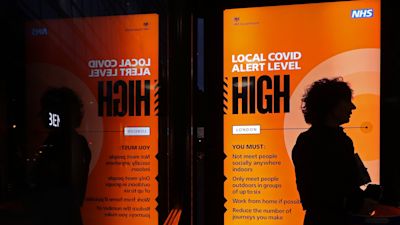Covid: How are tiers decided and what needs to be done to get out of Tier 3?

Video report by ITV News Correspondent Stacey Foster
A full list of which areas of England will be placed under what tier of coronavirus restrictions when lockdown ends on December 2 has been unveiled by the government.
With only three areas under Tier 1 - Cornwall, the Isle of Wight and the Isles of Scilly - millions of people in England will want to know what it takes to drop down a tier.
The government will review each tier weekly, with the first review taking place a fortnight after lockdown ends - on Wednesday December 16.
What is considered when deciding an area's tier?
Coronavirus case numbers across all age groups - particularly among the over 60s
How quickly Covid-19 case rates are rising or falling
The percentage of positive tests in the general population
Pressure on the local NHS – including current and projected NHS capacity based on data around admissions, general/acute/ICU bed occupancy, staff absences
Local context and exceptional circumstances such as a local but contained outbreaks
If these indicators are not improving, an area may be moved up to a stricter tier - if the coronavirus situation in the local area is improving, it could move down a tier.
More than 23 million people in England will be living under Tier 3 measures after lockdown lifts
Which tier am I in after lockdown ends in England? The full list revealed
The Joint Biosecurity Centre (JBC), Public Health England (PHE) and the NHS monitor data and provide advice to Chief Medical Officer Chris Whitty and ministers through the Local Action Committee and the Covid Operations Committee.
The prime minister then makes the final decision on moving tiers at the 'Covid Operations Committee'.
How to get out of Tier 3?
Each area placed into the highest level of coronavirus restrictions will be offered support for rapid mass testing from the government to help drive down infection levels.
If desired by local leaders, NHS Test and Trace and the armed forces will deliver a six-week rapid community testing programme.
Rapid mass testing will use lateral flow tests, which give results within an hour, to identify asymptomatic infections in particular.
Explained: New Covid tier rules
The more positive cases who are self isolating, the quicker transmission levels will be brought down, meaning a faster route out of Tier 3.
Local authorities will be able to decide whether to use lateral flow test kits for targeted testing for high-risk workplaces and industries, or for wider asymptomatic community testing, to find positive cases more quickly and break chains of transmission.
Health Secretary Matt Hancock said: "I know for those of you faced with Tier 3 restrictions this will be a particularly difficult time but I want to reassure you that we’ll be supporting your areas with mass community testing and extra funding.
"By following the rules together we can get out of these tough measures."
What can you do in each tier from December 2? The new rules in England at a glance:
Tier 1: Up to six people can meet indoors or outdoors. Pubs and restaurants can open, with last orders at 10pm and closing at 11pm.
Tier 2: No mixing indoors, apart from support bubbles. Up to six people can meet outdoors. Pubs and restaurants can open, with last orders at 10pm and closing at 11pm - but alcohol can only be served with a substantial meal.
Tier 3: No mixing indoors. People can only meet outdoors in limited places such as parks and public gardens. Pubs and restaurants must close, with the exception of takeaway sales.
In all tiers, non-essential shops, gyms, hairdressers and personal care services can open. People in all tiers to work from home where they can do so. Full details on what you can do in each tier here.
Listen to the ITV News Politics Podcast: